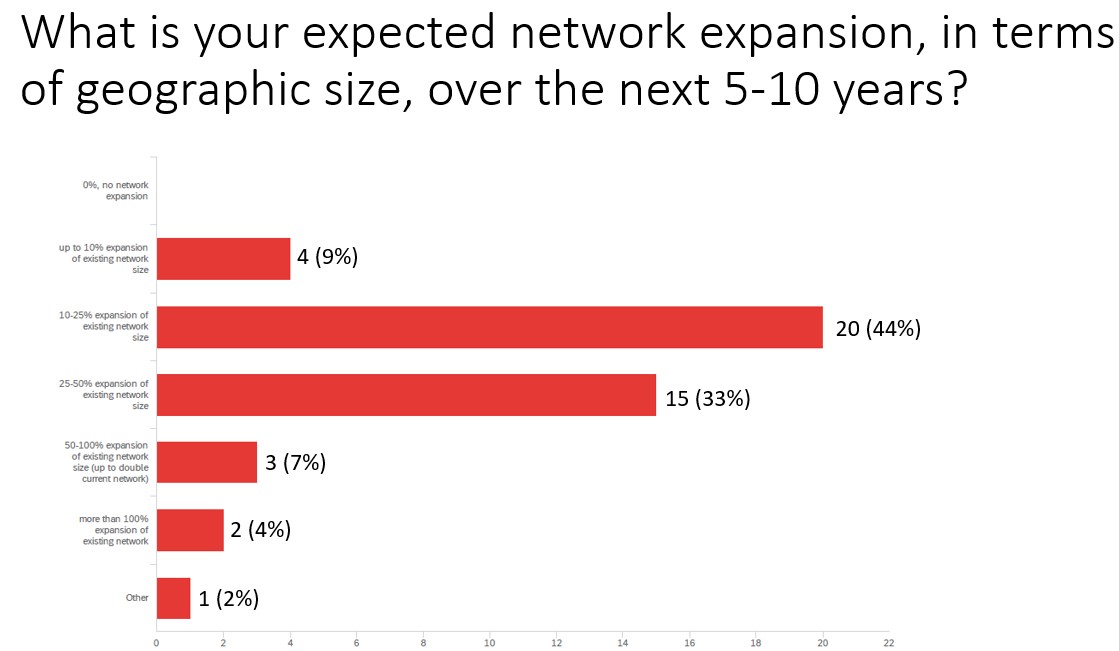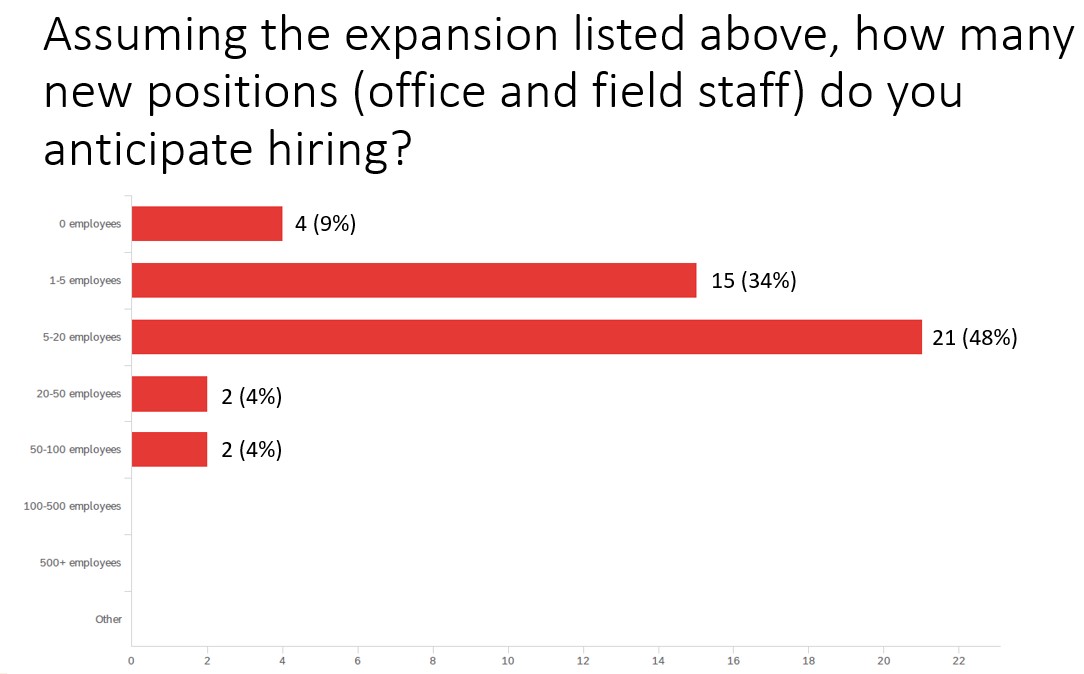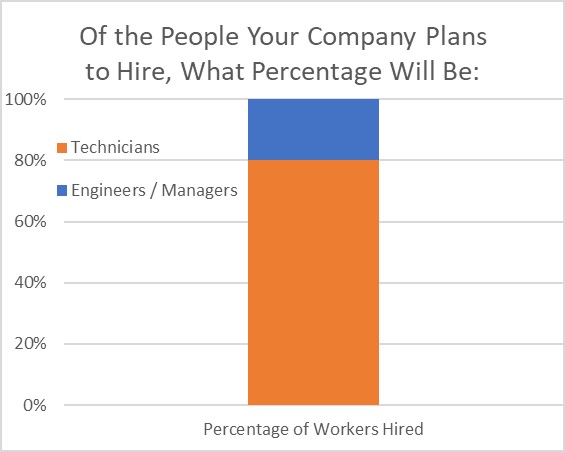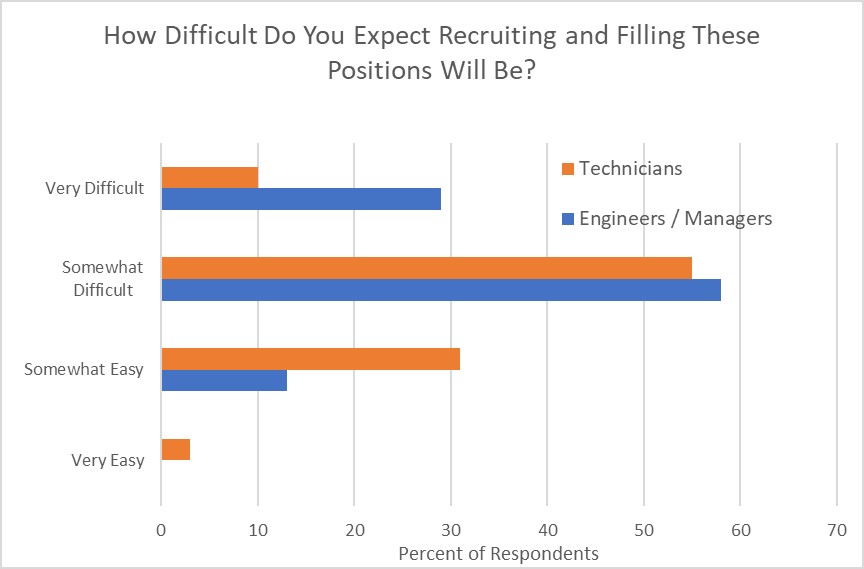Broadband Workforce Survey Shows Challenges Providers Expect During BEAD Rollout
Tuesday, October 31, 2023
Digital Beat
Broadband Workforce Survey Shows Challenges Providers Expect During BEAD Rollout
20% of Broadband Workforce Expansion Will be Engineers/Managers

A recently released survey of fixed-broadband providers demonstrates their workforce expectations as the Broadband Equity, Access, and Deployment (BEAD) Program gains momentum across states.
Representatives of 46 broadband providers—including electric cooperatives and fixed-wireless, telephone, and cable companies—completed the survey. These providers typically served between 5,000 and 50,000 customers. Over half of the respondents had between 50 and 200 employees, with another 40 percent having between 10 and 50 employees. Seventy-five percent of survey respondents expected to receive federal or state broadband funding over the next 5-10 years, and most (77%) envision a 10-50% expansion of the geographic size of their network during that time.

Assuming the network expansion they predicted occurs, half of the providers think they will add between 5 and 20 new positions to their workforce. Another third envision hiring 1 to 5 employees.

Importantly, not all of these new positions will be technicians like line installers or repairers. A full 20 percent of the expected hires will be engineers or managers – positions that may be particularly hard to fill given the educational requirements and expected experience.

Only 13% of respondents felt that recruiting and filling these engineer / manager positions would be “somewhat easy,” with 29% saying it would be “very difficult.” Alternatively, 34% of respondents felt that recruiting and filling the technician positions would be either very or somewhat easy, and only 10% felt that it would be “very difficult.”

Other important findings from the survey are that most employers expect that less than 25% of the new hires will be contracted labor (i.e., most will be employees of the company) and that remote positions are expected to be rare for the engineer / manager positions.
Takeaway
The majority of the discussion around the pending boom in the demand for broadband workers has been on the technicians that will be responsible for rolling out the physical infrastructure. However, little research has focused on the workforce expectations of broadband providers themselves—and, specifically, the proportion of jobs that will go to two distinct categories of workers. The survey here defines these as (1) Engineers/Managers (project managers, network architects, GIS analysts, regulatory/compliance officers) and (2) Technicians (line installers/repairers, surveyors, first-line supervisors).
The results suggest that roughly 20% of the workforce that broadband providers will need in the coming 5-10 years will require either advanced degrees or significant on-the-job experience. These jobs require a lengthy pipeline, and 4-year universities should be aware that a short-term increase in demand for them is on the immediate horizon.
Also worth considering is the fact that states will be on different timelines. The recently-released BEAD Initial Proposal Progress Dashboard makes clear that some states are much further ahead than others in gaining access to the first 20% of their BEAD funding allocations. These states will be at an advantage as they distribute awards, since providers in those locations will have the first-mover advantage in hiring workers. Lagging states (especially those with neighbors with lots of BEAD funding) may see higher costs as they compete for talent in both the engineer and technician categories.
One final takeaway is that only half of the surveyed providers considered their employers to be either somewhat or extensively working on broadband workforce development in their region or state. This suggests that many companies might find “best practices” in this area useful.
Background
The broadband workforce has been a hot topic since the BEAD program was announced in early 2022. A December 2022 Government Accountability Office report argues that BEAD and other federal broadband programs could create an additional 5,000 – 15,000 workers in the fixed broadband industry between 2023-2023. A March 2023 Brookings webinar predicted 70,000 construction jobs during this phase, and a May 2023 Brookings article discusses a path for inclusivity as the broadband workforce grows. NTIA released a 54-page workforce planning guide for BEAD eligible entities with sections on understanding the workforce landscape and pathways for achieving workforce goals. Just last week, Verizon announced that it would be hiring 1,800 additional technicians to support its plans for broadband expansion on the East Coast.
Survey Development
Researchers at Oklahoma State University developed an online survey that was approved by their Institutional Review Board and distributed between April and October 2023. The survey was distributed via email by members of the Oklahoma Broadband Expansion Council, and advertised at events for NTCA and Rural Electric Cooperative conferences.
In total, 46 distinct broadband providers participated, located in 17 states.
A full copy of the survey results is available here.
Brian Whitacre is Professor and Jean & Patsy Neustadt Chair in the department of Agricultural Economics at Oklahoma State University. Brian’s main area of interest is rural economic development, with a focus on the role that technology can play. He also serves as the chair of Oklahoma’s Broadband Expansion Council.
The Benton Institute for Broadband & Society is a non-profit organization dedicated to ensuring that all people in the U.S. have access to competitive, High-Performance Broadband regardless of where they live or who they are. We believe communication policy - rooted in the values of access, equity, and diversity - has the power to deliver new opportunities and strengthen communities.
© Benton Institute for Broadband & Society 2023. Redistribution of this email publication - both internally and externally - is encouraged if it includes this copyright statement.
For subscribe/unsubscribe info, please email headlinesATbentonDOTorg






